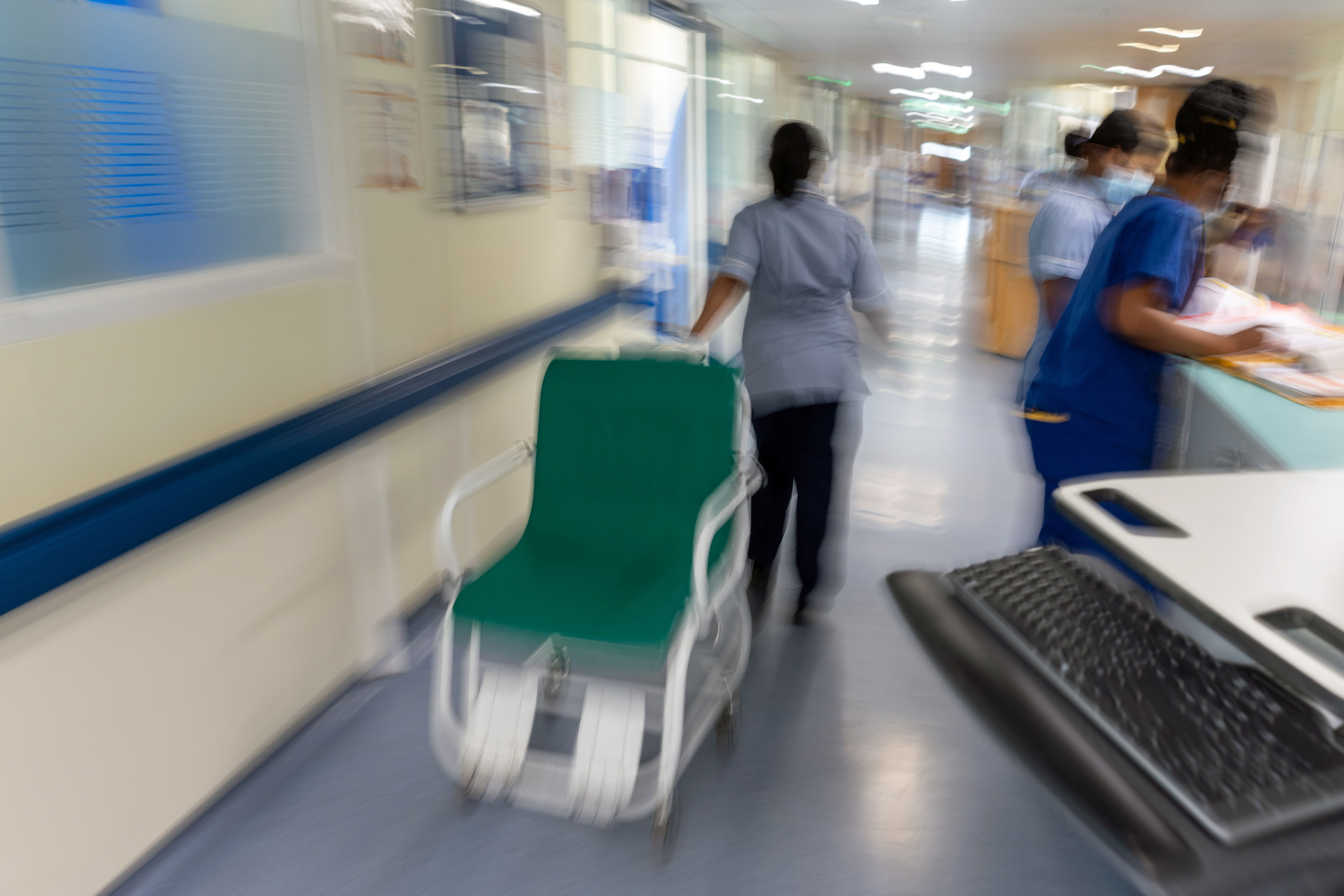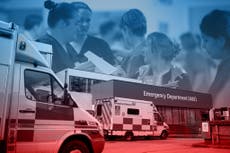Government to create 900 new hospital beds by January with £250m injection into NHS
The funding is part of the Urgent and Emergency Care Recovery plan published in January.

The government has revealed plans to pump £250m into the NHS in a bid to boost capacity and tackle record waiting lists before winter.
The move will lead to the creation of 900 additional hospital beds and forms part of the Urgent and Emergency Care Recovery plan, which was published in January.
It comes as the four-day walkout by junior doctors in England ends at 7am on Tuesday, although NHS national medical director Professor Sir Stephen Powis said: “Industrial action is still causing significant disruption into Tuesday morning and services and staff will need time to recover.”
He added: “It’s important that the public continue to use services wisely during this period by going to NHS 111 online first for help, advice and referral and, in a life-threatening emergency, please continue to call 999.”
The two-year blueprint to create extra hospital beds – backed by £1bn – aims to increase NHS capacity with 5,000 new beds, improve patient experience and reduce waiting times.
It is expected that 30 NHS organisations will benefit from this tranche of funding.
It will support the development or expansion of urgent treatment centres and same-day emergency care services, allowing patients to be seen faster without the need for hospital admission.
The NHS said it expects the majority of the projects to be completed by January.
Winter is always a busy time for the NHS and so it is right that we put robust plans in place as early as possible to boost capacity and help frontline staff to prepare for additional pressure
It comes after new data from NHS England revealed waiting lists had reached a record 7.6 million at the end of June.
Prime minister Rishi Sunak said: “Cutting waiting lists is one of my top five priorities, so this year the government has started planning for winter earlier than ever before and the public can be reassured we are backing the NHS with the resources it needs.
“These 900 new beds will mean more people can be treated quickly, speeding up flow through hospitals and reducing frustratingly long waits for treatment.”
Health secretary Steve Barclay said the move should allow the NHS to “get ahead” of winter pressures while creating a “sustainable” health service that is “fit for the future”.
He added: “Creating additional hospital capacity will support staff to provide the best possible care and treat patients more quickly, helping us to improve waiting times.”
Amanda Pritchard, NHS England chief executive, said: “Winter is always a busy time for the NHS and so it is right that we put robust plans in place as early as possible to boost capacity and help frontline staff to prepare for additional pressure.”
Miriam Deakin, director of policy and strategy at NHS Providers, said trusts “will welcome additional support” and increasing bed numbers “could help ease pressure on hospitals by closing the gap between capacity and demand, meaning patients could be seen sooner”.
“However, this is just one piece of a much larger puzzle,” she added. “Not only will these new beds need to be staffed, but underlying issues including workforce shortages, a lack of investment in capital and the desperate need for social care reform will ultimately hinder progress unless also addressed.
“Similarly, other parts of the health system, including mental health and community services, need adequate investment in physical capacity to meet high demand.
“As winter is the busiest time of the year for urgent and emergency care, trust leaders will be very concerned that this extra capacity is only expected to be in place by January. For the best results, trusts would need these new beds before winter begins.
“It will also be important to understand where new beds are being created, and where beds are being freed up by better means of meeting patients’ needs through care at home or same day emergency care, for example.
“Steps like this are promising, but the only way to recover urgent and emergency care, and to put the NHS on a sustainable footing, is for the government to tackle the longer-term challenges in health and care.”
RCN general secretary and chief executive, Pat Cullen, said: “The elephant in the room is who will staff these additional beds? Nursing staff are already spread too thinly over too many patients.
“Everyday nursing staff are under unsustainable pressure, with over 40,000 vacant nursing posts in England. It is leaving our patients receiving lower quality care, often in inappropriate settings, and our colleagues burnt out and heading towards the door.
“If the prime minister is serious about cutting waiting times, he should not ignore the nursing staff walking out of the profession. He will continue to fail to meet his pledge to cut NHS waiting times if nursing is not seen as an attractive, well-paid profession to join or stay in.”
Shadow health secretary Wes Streeting accused the government of saddling the health service with “huge backlogs, unacceptable waiting times and an annual winter crisis”.
He said: “Now Rishi Sunak is offering a sticking plaster, which comes nowhere near the 12,000 beds the Conservatives have cut over the last 13 years.”
Siva Anandaciva, chief analyst at The King’s Fund think tank, said any extra capacity in the NHS ahead of winter was a “positive thing”, but added: “To improve care for patients the NHS also needs enough clinical professionals to staff these extra beds.
“While progress is being made to increase staffing numbers and deliver on the workforce plan, the NHS is facing 112,000 vacancies.
“Additionally, hospitals don’t work in isolation. The latest performance figures showed that 11,900 patients remained in hospital on an average day despite being medically fit to be discharged.
“To free up more beds and staff in hospitals, there needs to be a focus on boosting capacity in community and primary care settings as well as social care reform.”



Bookmark popover
Removed from bookmarks